Q&A Wednesday: How to store a Genizah fragment, with Marina Pellisari
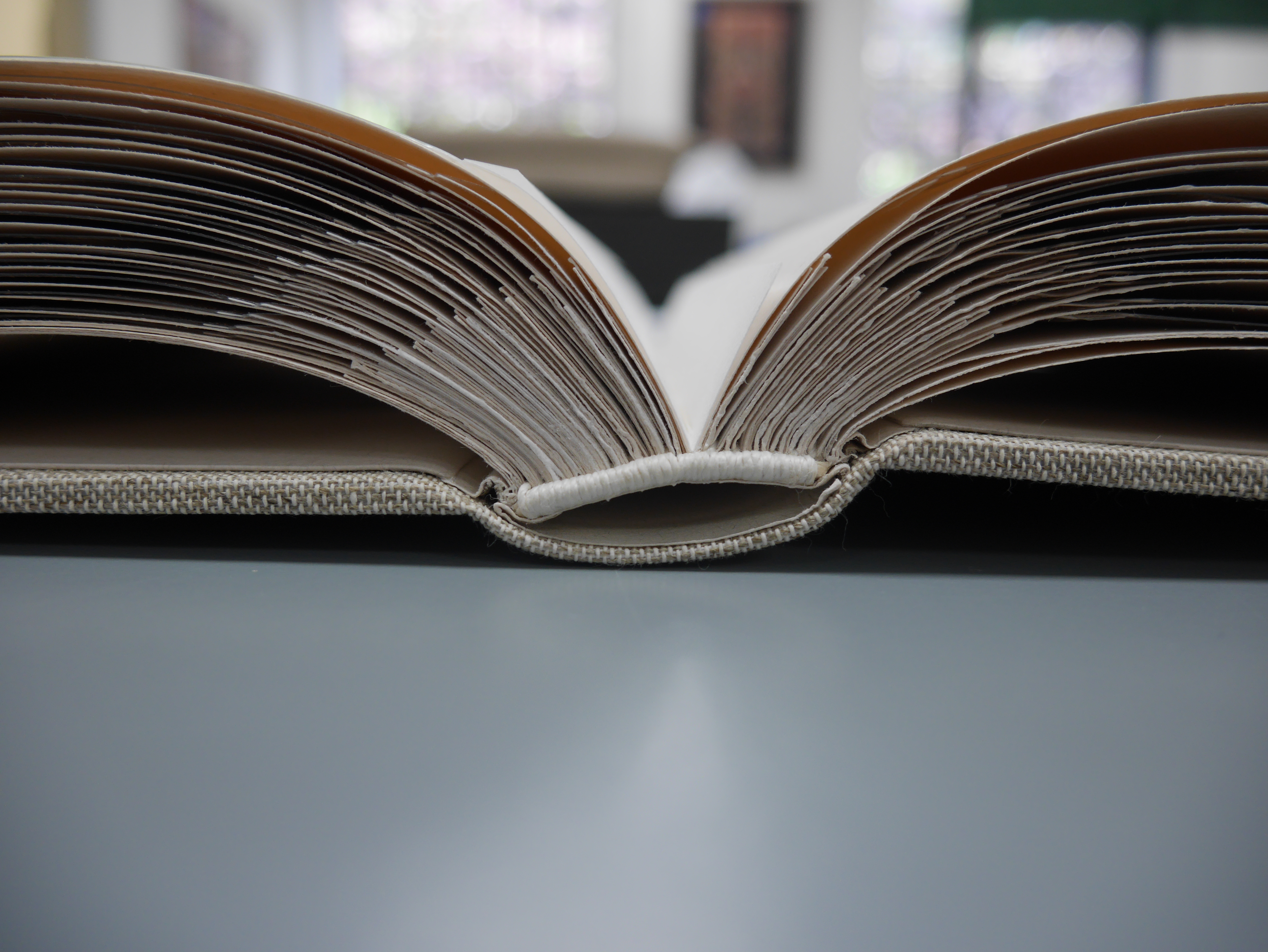
Marina, what are you working on today?
I’m one month into a nine-month project to prepare the final housings for the Cambridge part of the Lewis-Gibson Genizah collection. These manuscripts were originally collected by Agnes Lewis and Margaret Gibson, and were donated by them to Westminster College. In 2013 Cambridge and Oxford jointly bought the manuscripts, and half have now been sent to Oxford. The Cambridge fragments have already been conserved and encapsulated in Melinex – an archival plastic – but they are now being bound into books. Today, I’m working on Talmud 1. There are 113 classmarks but 123 individual fragments in Talmud 1, and they are being bound into 3 folders.
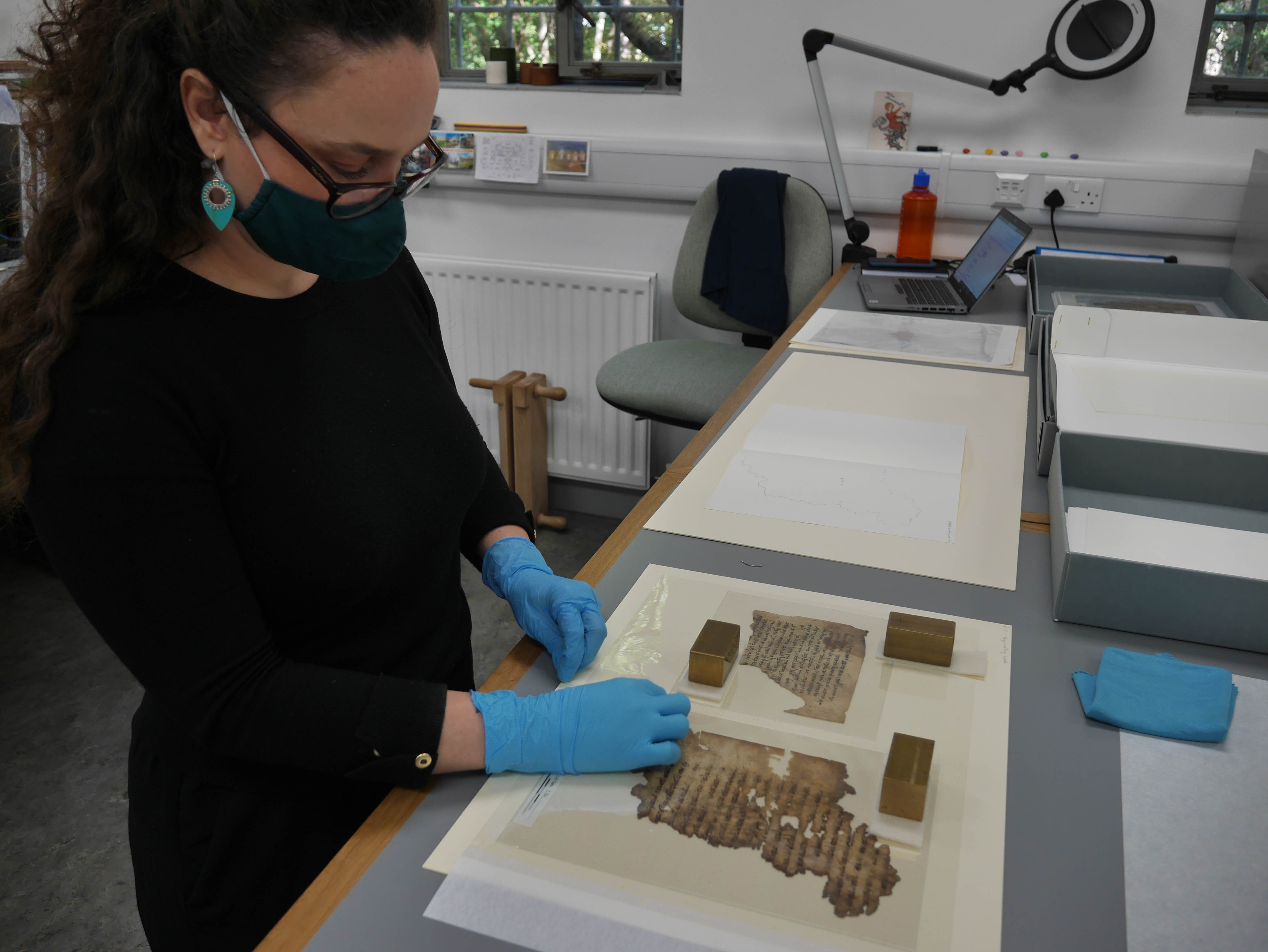
Can you tell us about how the fragments are going to be housed?
Most of the fragments are being housed in large landscape-oriented books. Each fragment sits in its own Melinex pocket, which is then sewn onto a larger Melinex sheet. The Melinex sheet is sewn onto a strip of bondina (a flexible material that hinges the page into the book). Each Melinex sheet has a backing sheet of archival paper in a neutral colour, and a guard strip to compensate at the spine for the thickness of the Melinex and fragments. Sets of two Melinex sheets and their accompanying backing papers are sewn together to make a gathering. Once all of the gatherings have been assembled into a textblock, they are sewn together at one end to create the spine of the book. The boards – the cover of the book – are glued and clamped. End bands are sewn in to support the spine when it flexes, and a neutral-coloured cloth covering over the board and spine is then added.
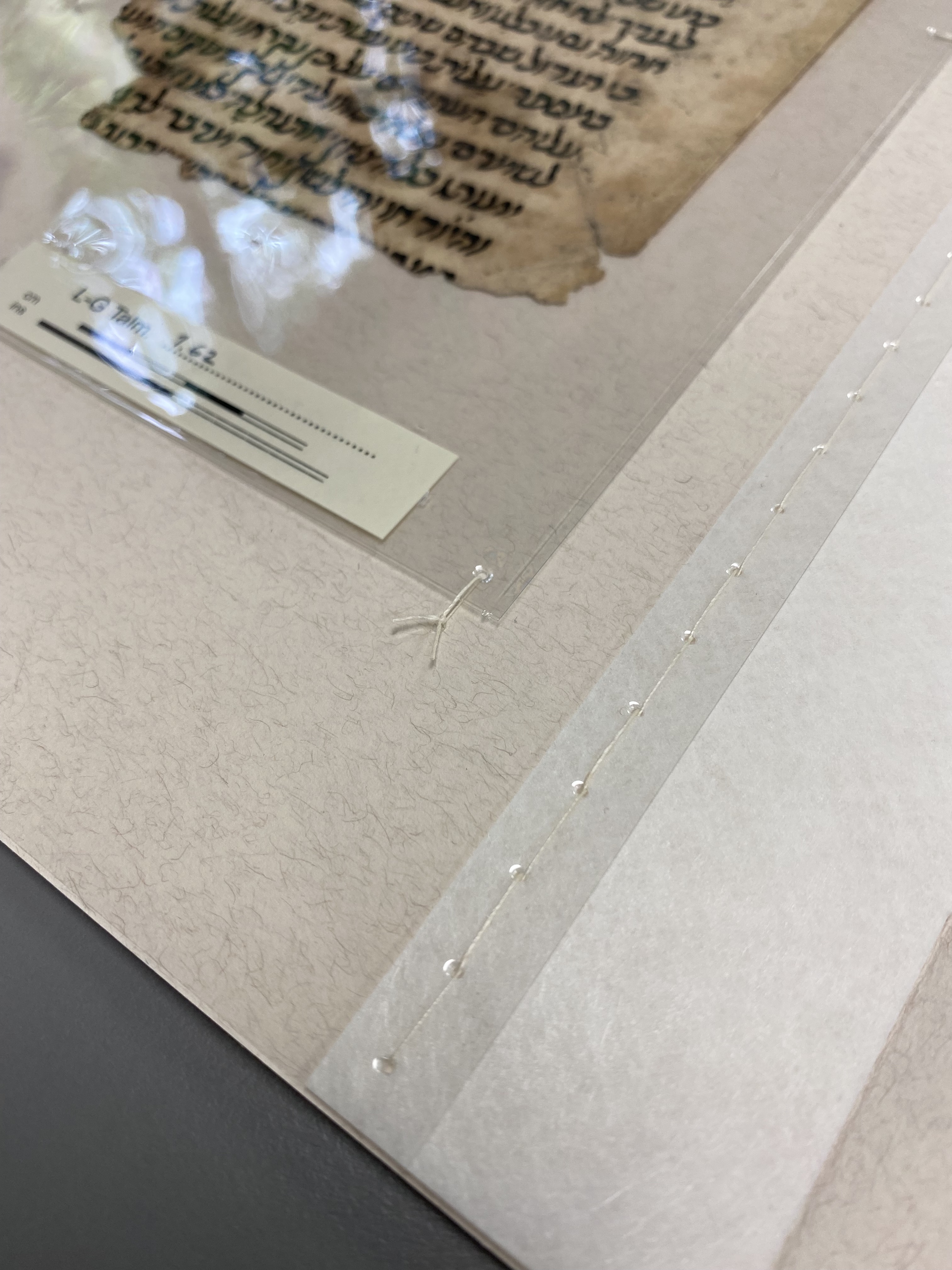
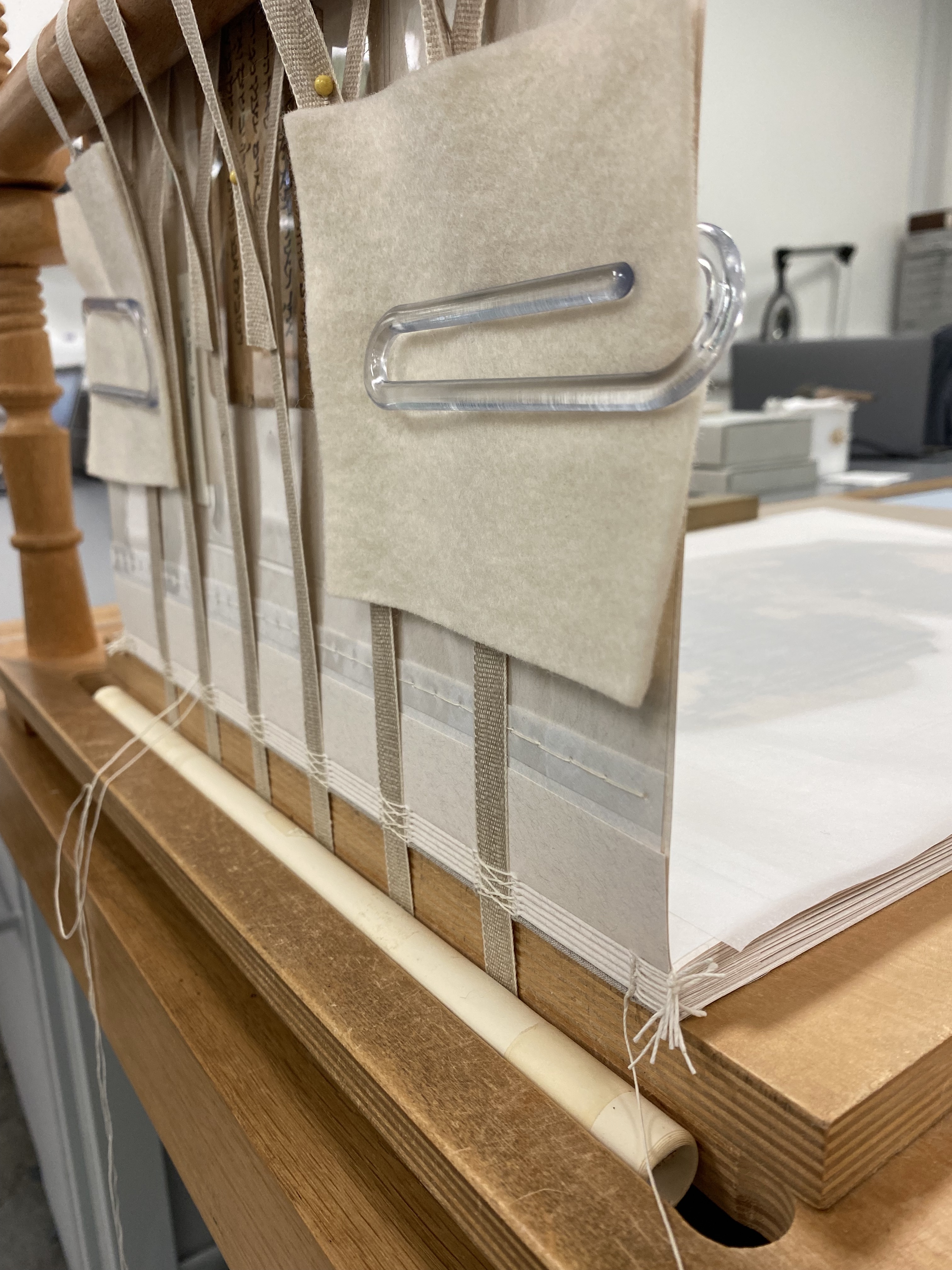
What is your role in the process?
The University Library’s Collections Care team have pre-cut the paper and Melinex sheets, and strips of bondina. I start by looking at a spreadsheet of all the manuscripts in Talmud 1 and plotting out which fragments will go on which page. Talmud 1 is divided into three volumes because of the combined weight of the Melinex and fragments – we don’t want individual volumes to be too unwieldy. I then assemble the different parts of the gathering and sew it all together by hand, stitching the fragments in their Melinex pockets onto the Melinex sheet, and so on. My end ‘product’ is a volume bound in cloth, with brown leather labels tooled in gold with the title and contents of the folder.
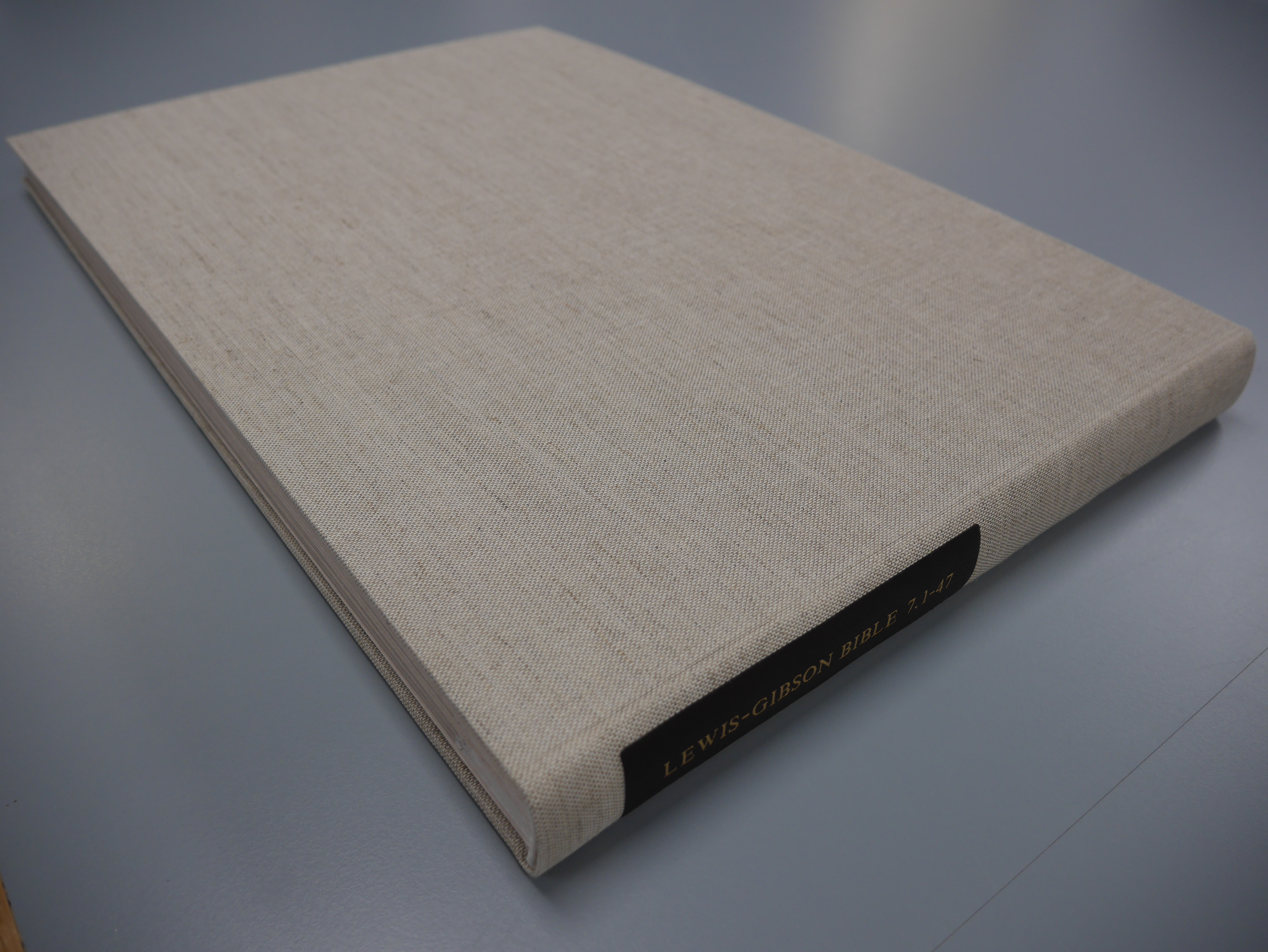
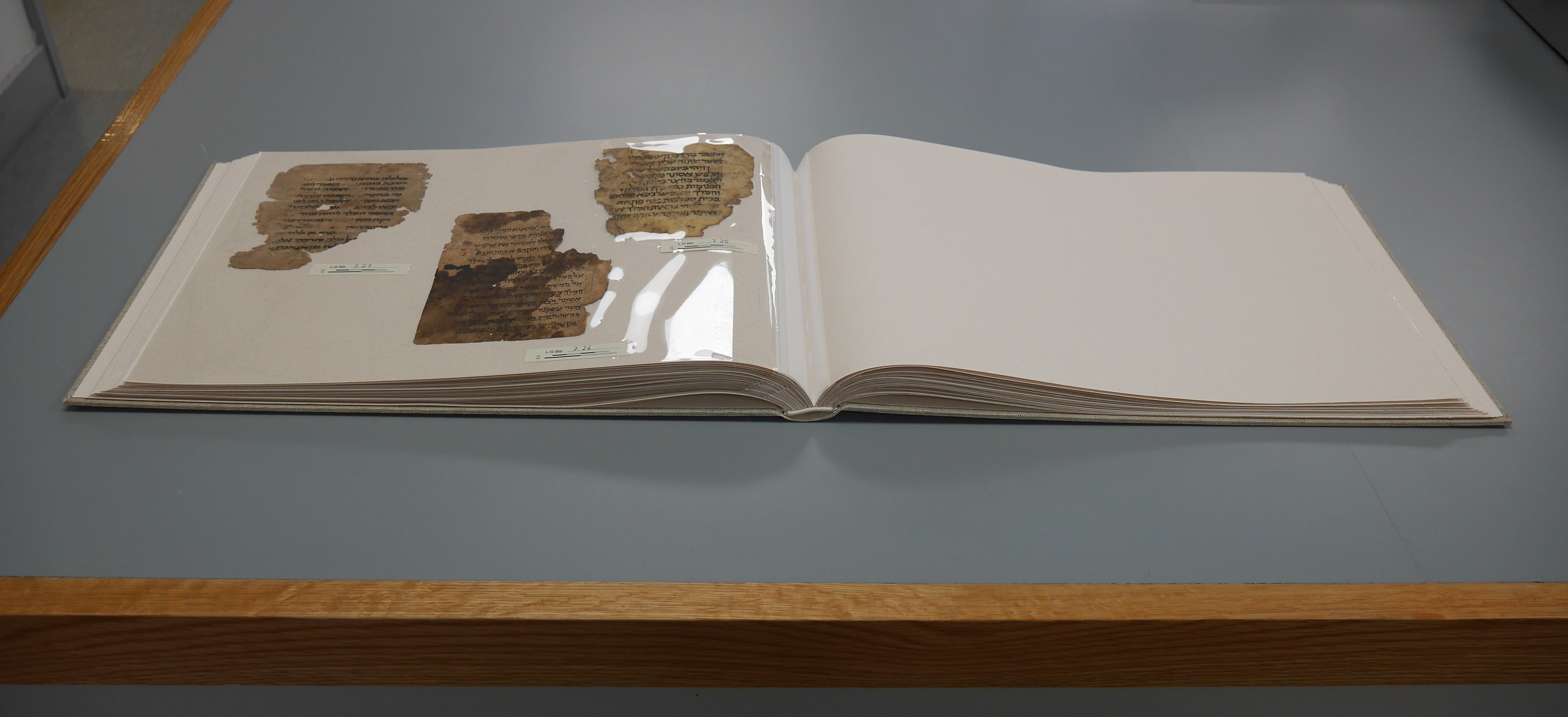
Anyone who has visited the Taylor-Schechter Genizah Collection will be familiar with looking at fragments in large black binders – some of them ring binders. Why was a different housing system chosen for the Lewis-Gibson collection?
With this housing system, it will be easy to remove a fragment (for example, for an exhibition) without having to dismantle the rest of the book. Melinex pockets or sheets can also be easily replaced if they become too scratched (which Melinex is prone to do). The bound volumes have been designed to be a more manageable size (particularly when compared to the large NS folders in the Taylor-Schechter collection), with fewer manuscripts on each page. Any time a page is turned, manuscripts are forced to flex, and we want to avoid that. With ring binders (used in much of the T-S Collection), pages turn in an awkward way. The Lewis-Gibson bound volumes open out completely flat, so that fragments do not need to flex, and the books have been designed so pages can even be turned without touching the melinex at all.
How are you dealing with fragments that are too large for the housing, or fragments with multiple leaves?
Most manuscripts with multiple leaves were already disassembled before the fragments came to us. Such pages are placed on adjacent pages in the volumes for easy reference. Any booklets that still had their original binding have been preserved separately from these volumes, in an individual box. We would not take apart a booklet that had retained its original binding. Oversize fragments (there are a couple of these in Talmud 1) are placed in Melinex sheets and mounted in frames of two sizes. They will be stored flat with a sheet of foam board at the front and back to offer maximum support.
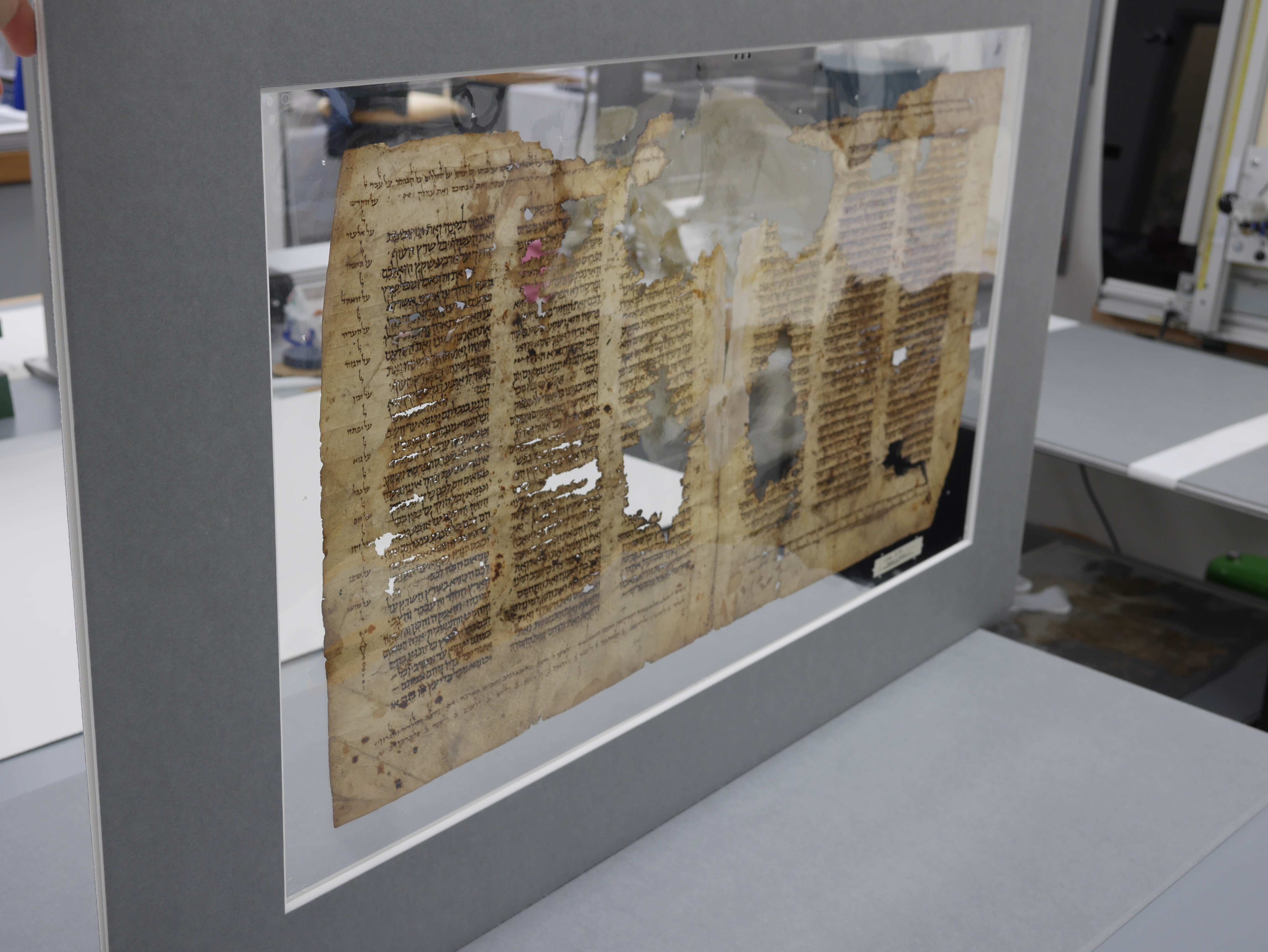
Thanks very much Marina – we look forward to enjoying these bound volumes for many years to come. For anyone not able to visit Cambridge at the moment, the fragments in Talmud 1 have all been digitised and are available to see on Cambridge Digital Library.
Marina Pelissari is a Book and Paper Conservator at Cambridge University Library.
Images taken by Emma Nichols and Melonie Schmierer-Lee.

Add new comment